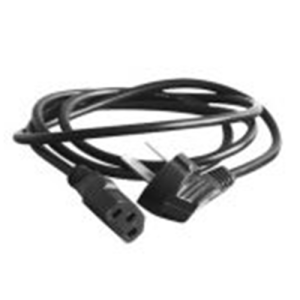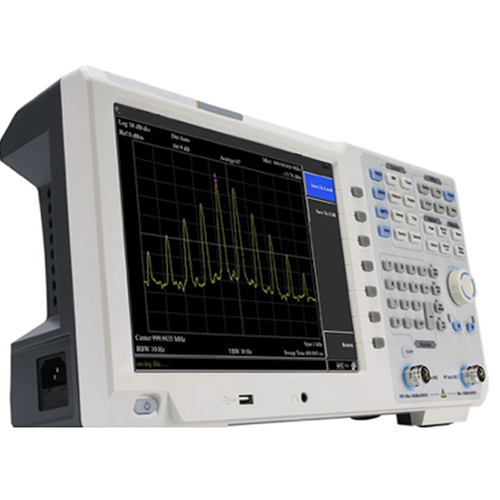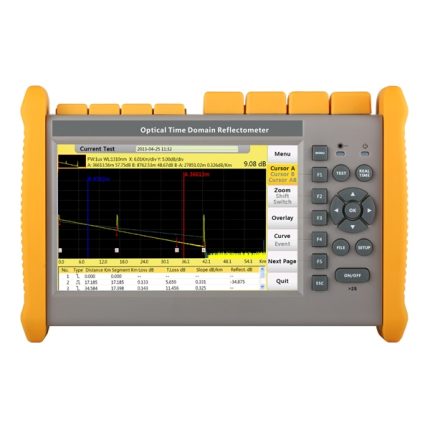Description
Overview
GAOTek Spectrum Analyzer (9 kHz ~1.5 GHz, Phase Noise -85 dBc/Hz@10 kHz, DANL -150 dBm) is a test equipment designed to examine the frequency spectrum of radio frequency (RF) with -150 dBm displayed average noise level. This device is used for locating, identifying, and solving problems in radio frequency circuits and equipment. The minimum resolution bandwidth of 10 Hz allows excellent signal resolution when separation of closely spaced signals is required and phase noise of -85 dBc/Hz enables users to evaluate most synthesizers and signal generators. It has a -150 dBm displayed average noise level which assures that the unit will not interfere with the actual data and can observe a weaker signal. It provides EMI filter and quasi-peak detector kit to help evaluating EMI levels for pre-compliance testing.
Features
- Frequency Range from 9 kHz up to 5 GHz
- -150 dBm Displayed Average Noise Level (DANL)
- Phase Noise -85 dBc/Hz @1Gz and offset at 10 KHz
- Total Amplitude Accuracy <1.5 dB
- 10 Hz Minimum Resolution Bandwidth (RBW)
- EMI Pre-compliance Test Kit
- 5 GHz Tracking Generator Kit
- 4 inches display
Technical Specifications
| Frequency Specification | ||
| Frequency Range | 9 kHz ~ 1.5 GHz | |
| Frequency Resolution | 1 Hz | |
| Frequency Span | ||
| Frequency Range | 0 Hz, 100 Hz to maximum frequency of device | |
| Frequency Accuracy | ± span/(swept points -1) | |
| Internal Reference | ||
| Reference Frequency | 10.000000 MHz | |
| Reference Frequency Accuracy | ± [(days from last calibrate × freq aging rate) + temperature stability + initial accuracy] | |
| Temperature Stability | < 2.5 ppm 59 °F to 95 °F (15 °C to 35 °C) | |
| Aging Rate | < 1 ppm / year | |
| Readout | ||
| Marker Frequency Resolution |
span/(the number of sweep points -1) |
|
| Uncertainty | ± (freq indication × freq reference uncertainty +1%× span +10%× resolution bandwidth + Marker Frequency Resolution) | |
| Frequency Counter | ||
| Resolution | 1 Hz, 10 Hz, 100 Hz, 1 kHz | |
| Accuracy | ± (marker freq × freq reference uncertainty + counter resolution) | |
| Bandwidth | ||
| Resolution Bandwidth (-3 dB) | 10 Hz to 500 kHz (in 1 to 10 sequence), 1 MHz, 3 MHz | |
| Resolution Filter Shape Factor | < 5:1 nominal (Digital implement, similar to Gauss Pattern) | |
| Accuracy | < 5 % nominal | |
| Video Bandwidth (-3 dB) | 10 Hz to 3 MHz | |
| Amplitude Specification | ||
| Amplitude Measurement Range |
DANL to +20 dBm, close the preamplifier |
|
| Reference Electric Level | -80 dBm to +30 dBm, 0.1 dBm steps | |
| Preamplifier | 20 dB, nominal, 9 kHz ~ 1.5 GHz | |
| Input Attenuator Range | 0 dB ~ 39 dB, 3 dB steps | |
| Max Input DC Voltage | 50 V DC | |
| Max Continuous Power | 30 dBm, average continuous power | |
| Displayed Average Noise Level (DANL), Input Attenuation 0 dB, 1 Hz Resolution Bandwidth | ||
| Preamp Off | 1 MHz to 10 MHz | -130 dBm (Typical) |
| 10 MHz to 1 GHz | -130 dBm (Typical) | |
| 1 GHz to 1.5 GHz | -128 dBm (Typical) | |
| Preamp On | 1 MHz to 10 MHz | -150 dBm (Typical) |
| 10 MHz to 1 GHz | -150 dBm (Typical) | |
| 1 GHz to 1.5 GHz | -148 dBm (Typical) | |
| Phase Noise (68 °F ~ 86 °F (20 °C ~ 30 °C, fc=1 GHz)) | ||
| Phase Noise | <-85 dBc/Hz @10 kHz offset | |
| <-100 dBc/Hz @100 kHz offset | ||
| <-110 dBc/Hz @1 MHz offset | ||
| Level Display Range | ||
| Log Scale Coordinate | 1 dB ~ 255 dB | |
| Linear Scale Coordinate | 0 to reference level | |
| Level Unit | dBm,dBuW,dBpW,dBmV,dBuV, W,V | |
| Points | 201 ~ 1001 | |
| Number of Traces | 5 | |
| Detectors | Positive-peak, negative-peak, sample, normal, RMS | |
| Trace Functions | Clear write, Max Hold, Min Hold, View, Blank, Average | |
| Frequency Response 68 °F ~ 86 °F (20 °C ~ 30 °C, 30 % – 70 % relative humidity, 20 dB input attenuation, reference 50 MHz) | ||
| Preamp Off | ±0.8 dB | |
| Preamp On | ±0.9 dB | |
| Accuracy | ||
|
Input Attenuation Switching Uncertainty |
68 °F ~ 86 °F (20 °C ~ 30 °C, fc=50 MHz, Preamplifier Off, 20 dB RF attenuation, input signal 0 dB ~ 39 dB
±0.5 dB |
|
|
Absolute Amplitude Uncertainty |
68 °F ~ 86 °F (20 °C ~ 30 °C), fc=50 MHz, RBW=1 kHz, VBW=1 kHz, peak
detector, 20 dB RF attenuation, Preamplifier Off ±0.4 dB, input signal= -20 dBm Preamplifier On ±0.5 dB, input signal= -40 dBm |
|
| Uncertainty | Input signal range 0 dbm to -50 dbm | |
| ±1.5 dB | ||
| VSWR | Input 10 dB RF attenuation, 1 MHz ~ 1.5 GHz | |
| <1.5, nominal | ||
| Distortion and Spurious Response | ||
|
Second Harmonic Distortion |
fc ≥ 50 MHz, Preamp off, signal input -30 dBm, 0 dB RF attenuation, 68 °F ~ 86 °F (20 °C ~ 30 °C) | |
| -60 dbc | ||
|
Third-Order Intermodulation |
fc ≥ 50 MHz | |
| +13 dBm | ||
|
1 dB Gain Compression |
fc ≥ 50 MHz, 0 dB RF attenuation, Preamp off, 68 °F ~ 86 °F (20 °C ~ 30 °C) | |
| +7 dBm, nominal | ||
|
Residual Response |
Connect 50 Ω load at input port, 0 dB input attenuation, 68 °F ~ 86 °F (20
°C ~ 30 °C) |
|
| <-85 dBm, nominated | ||
|
Input Related Spurious |
-30 dBm signal at input mixer, 68 °F ~ 86 °F (20 °C ~ 30 °C) | |
| < -60 dBc | ||
| Sweep Time and Triggering | ||
| Span Range | 100 Hz ≤ SPAN ≤ 3 GHz 10 ms to 3000 s zero sweep width 1 ms to 3000 s | |
| Mode | Continue, single | |
| Trigger | Free run, video, external | |
| Tracking Generator | ||
| Output Frequency Range | 100 kHz ~ 1.5 GHz | |
| Output Power Level Range | -30 dBm ~ 0 dBm | |
| Output Power Level Resolution | 1 dB | |
| Output Flatness | ±3 dB | |
| Maximum Safe Reverse Level | Average total power: 30 dBm, DC: ±50 V DC | |
| Inputs and Outputs | ||
| Front Panel RF Input Connector | 50 Ω, N-type female | |
| Front Panel Track Generator Output | 50 Ω, N-type female | |
| 10 M Reference Input | 50 Ω, N-type female | |
| Communication Port | USB HOST, USB DEVICE, LAN, earphone port, and VGA | |
| General Technical Specification | ||
| Display | TFT LCD, 10.4 inches | |
| Power | 100 V – 240 V 50 Hz/60 Hz | |
| Working Temperature | 32 °F to 104 °F (0 °C to 40 °C) | |
| Storage Temperature | -4 °F to 140 °F (-20 °C to 60 °C) | |
| Dimension (W × H × D) | 16.57 in × 8.70 in × 4.52 in (421 mm × 221 mm × 115 mm) | |
| Weight | Approx. 10.93 lbs (4.96 kg) | |
Standard Accessories
| Name | Unit | |
| Power Cord | 1 |  |



